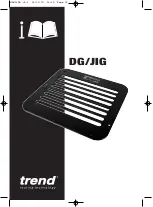
4 - ENG
OPERATING INSTRUCTIONS
TYPICAL INSTALLATION
To begin using the tool:
1. As a standard practice, drain water from the air compressor
tank and air lines prior to use each day (reference your
compressor operators manual for detailed instructions).
2. Install a 1/4” NPT male connector (not included) into the air
inlet port on the tool (see Figure 2).
Note: Use Teflon® Tape
on all threaded connections.
3. Turn on the air compressor and allow it to build up pressure.
4. Adjust the air compressor’s regulator or the supply line
regulator to 90 PSI.
5. Attach the desired 3/8” square drive socket (use 3/8” deep sockets and only use extensions when needed).
Always use impact-type sockets and extensions that are designed for ratchet
wrenches. Hand tool sockets will shatter and potentially cause personal injury and/or property damage.
6. Connect the tool to the air hose quick coupler.
NOTE: It is recommended that a whip hose with a swivel
(P012-0079SP - not included) be used to prevent twisting, kinking and excessive wear to the air hose
(ref. item “F” in figure 1 for recommended connections).
Always grip the air ratchet well to avoid the chance of it being wrenched from your
grasp or the possibility of it throwing you off balance.
7. Select the tool rotation direction. Turn the forward/reverse button to the right (clockwise) for forward or the
left (counterclockwise) for reverse.
a. To remove a fastener, turn the forward/reverse button to “R” (counterclockwise). Grip the wrench with
your hand and place it on the fastener to be loosened. Break the fastener loose by hand, then gently
squeeze the trigger to completely remove it. Release the trigger to stop the tool.
NOTE: Soak rusted nuts in penetrating oil and break the rust seal before removing with the air
ratchet wrench. If the nut does not start to move in three to five seconds, use a larger size air
ratchet wrench. Do not use the air ratchet wrench beyond the rated capacity, as this will
drastically reduce the tool life.
b. To tighten a fastener, turn the forward/reverse button to “F” (clockwise). Start the fastener by hand then
grip the ratchet wrench with your hand and place it on the fastener to be tightened. Gently squeeze the
trigger to tighten down the fastener. Drive the fastener until the ratchet stalls, release the trigger to stop
the tool, and then tighten further by operating the air ratchet wrench in the same manner as you would
operate a manually operated ratchet wrench.
NOTE: Do not use the air ratchet wrench to set torque. Always use a torque wrench to set
torque.
Disconnect the tool from the air supply before lubricating or changing sockets.
Key
Description
Key
Description
Key
Description
Key
Description
A Air hose
D In-line Oiler
G Quick Coupler
J Female Connector
B In-line Filter
E Air Hose
H Male Connector
K Spray Gun
C Tee Fitting
F Whip Hose
I Air Tool
Figure 1
Figure 2


































